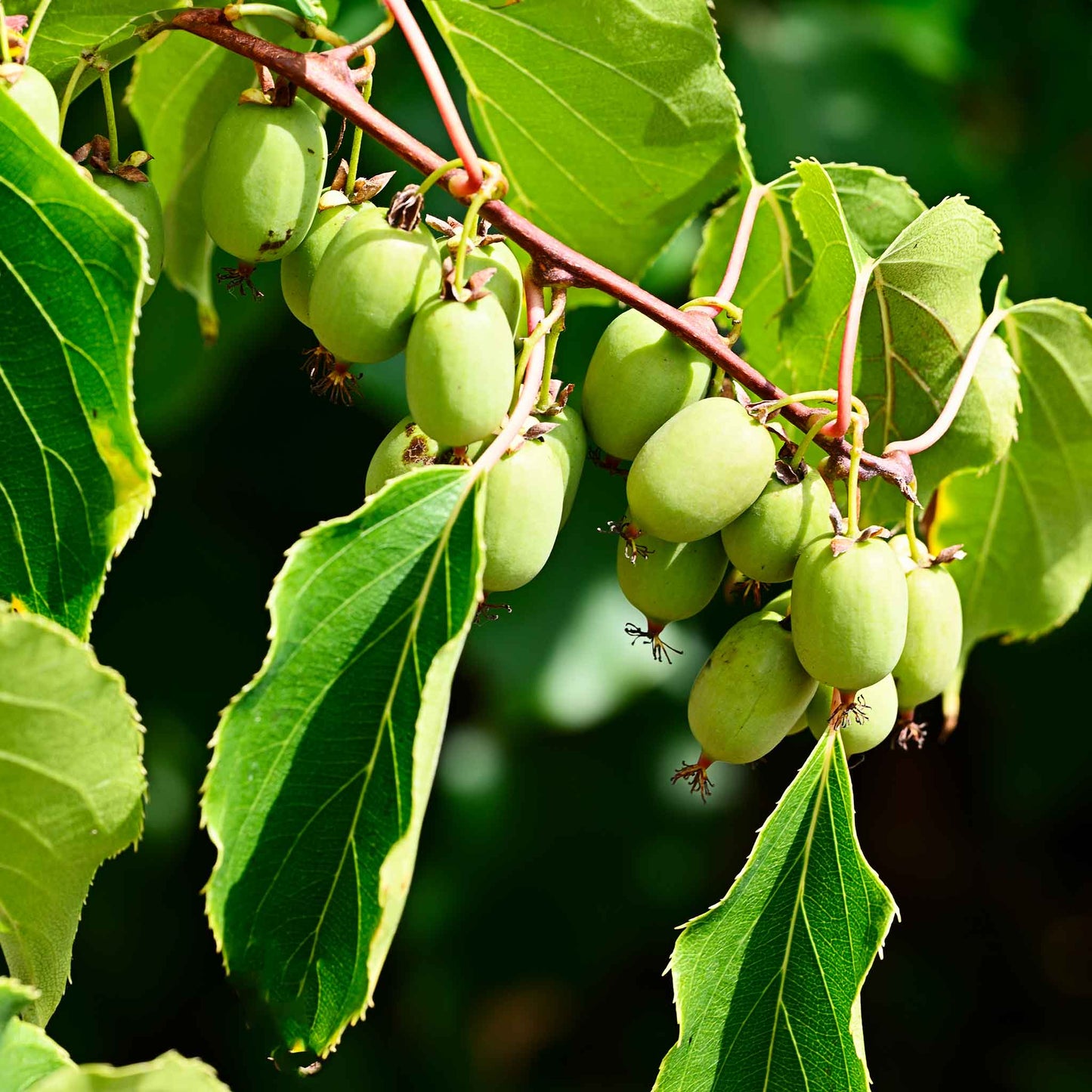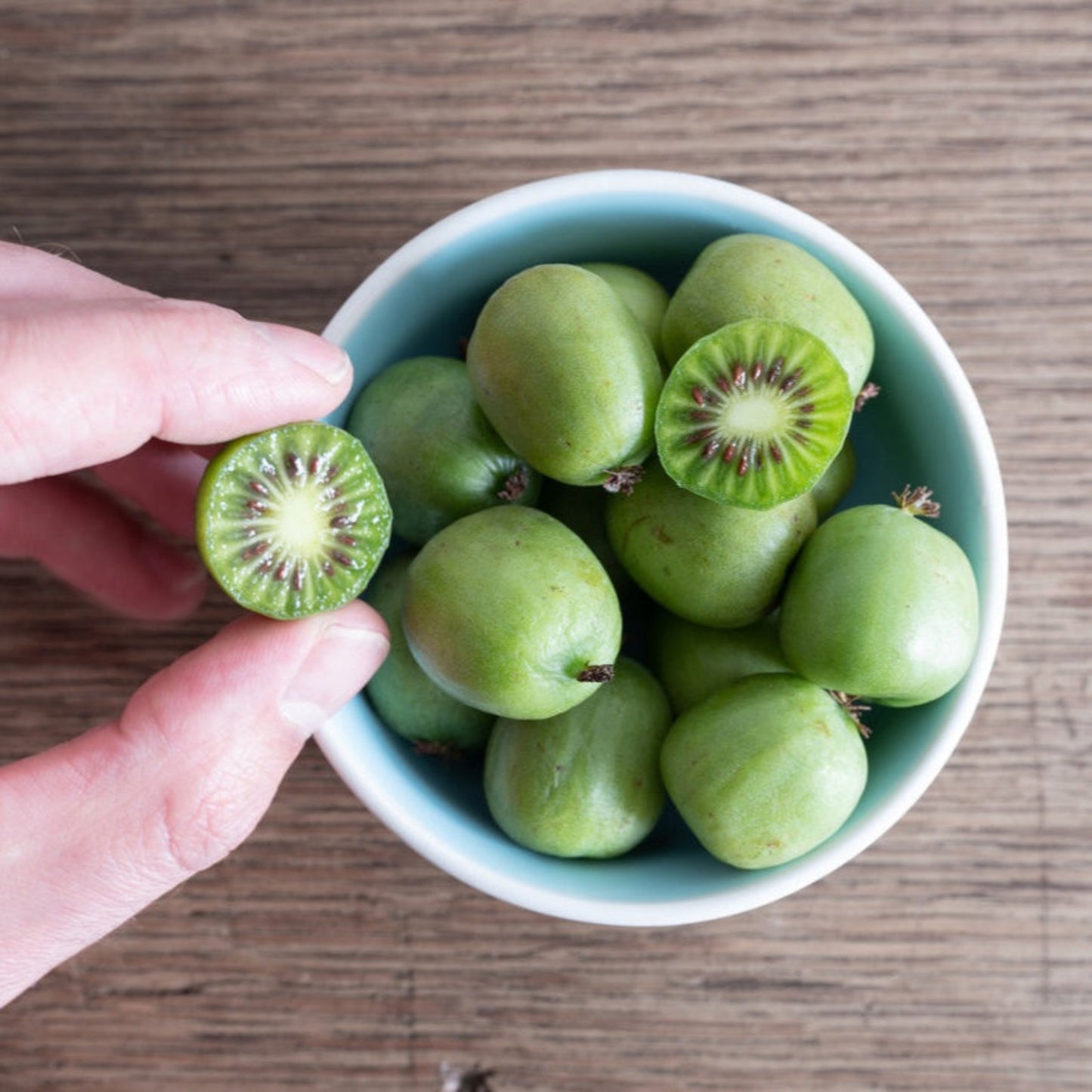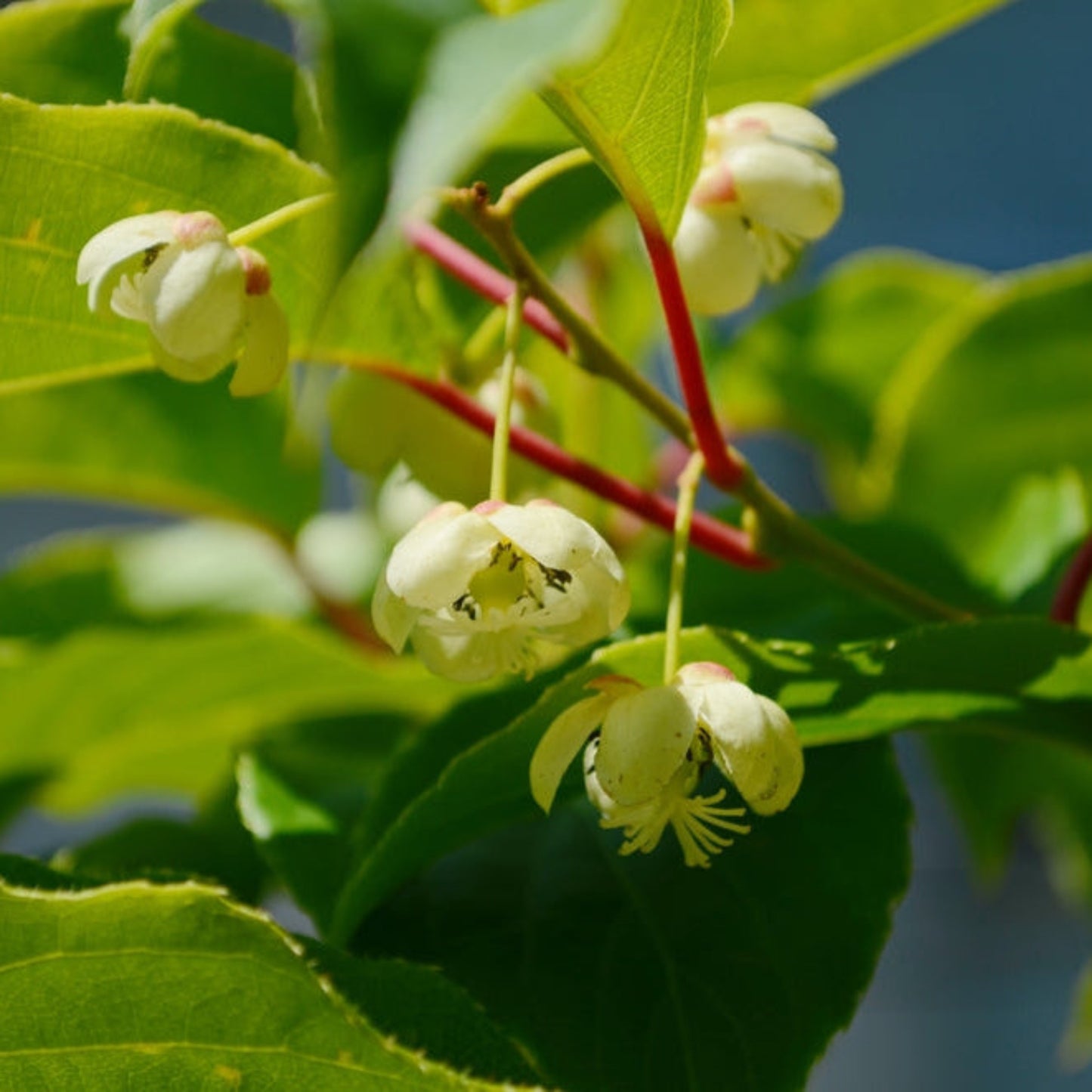Prolific Kiwi
Prolific Kiwi
SKU:EDI-KIW-KIW-NA-1G
Meet Your New Favorite Garden Companion: The Prolific Kiwi!
Imagine a lush green vine, not just any vine, but one that gifts you with the sweet, tangy fruits of your labor. That's right, we're talking about the Prolific Kiwi – your garden's new best friend!
Why You'll Love This Kiwi:
- Prolific Producer: No need to play the waiting game, as this kiwi variety is known for its generous bounty. More fruit, more fun!
- Self-Fertile Superstar: Forget about finding a mate for this plant. It's a solo act that doesn't need a pollinator partner to produce delicious kiwis.
- Easy-Peasy: Whether you're a green thumb or just starting out, this kiwi vine is low maintenance. It's all about the chill vibes in your garden.
Practical Perks:
Not only does it bring a playful twist to your outdoor space, but the Prolific Kiwi also comes with a bunch of practical benefits:
- Space Saver: No need for extra plants to ensure pollination, which means more room for other garden goodies.
- Year-Round Beauty: Enjoy the vibrant foliage as your kiwi vine transforms through the seasons, offering a visual treat.
- Grow Your Own: The satisfaction of plucking fresh kiwis right from your backyard? Priceless. Plus, you know exactly where your food comes from.
How to Get Started:
Ready to add some kiwi charisma to your garden? Planting is a breeze, and we've got all the tips and tricks to get you growing. So why wait? Let's turn that garden into a kiwi paradise!




Product Details
-
Product Category
Edibles
-
Product Subcategory:
Kiwis
-
Botanical Name:
Actinidia arguta 'Prolific'
-
Does Not Ship To:
AZ, OR
-
Mature Height:
12 ft. in Container
-
Mature Width:
Vine
-
Growing Zone:
4-8 outdoors
-
Indoor Growing:
-
Sunlight:
Full-Part Sun
-
Growth Rate:
Moderate
-
Harvest Time:
September - October
-
Bloom Time:
Summer

Planting Directions
<h2>Planting Prolific Kiwi</h2>
<p>To plant a self-fertile 'Prolific' kiwi plant, choose a sunny location with well-draining soil. Prepare a planting hole twice as wide and the same depth as the root ball. Amend the soil with compost to improve fertility and drainage. Place the plant in the hole, ensuring the base is level with the surrounding soil, then backfill and water thoroughly.</p>
<h2>Support Structure</h2>
<p>Kiwi plants require a strong support structure. Install a trellis or arbor before planting. Train the vines to climb the structure as they grow.</p>
<h2>Watering</h2>
<p>Water regularly to keep the soil consistently moist but not waterlogged. Reduce watering during the winter when the plant is dormant.</p>
<h2>Fertilization</h2>
<p>Apply a balanced fertilizer in early spring before new growth appears. Repeat fertilization in mid-summer, but avoid high-nitrogen formulas that can reduce fruiting.</p>
<h2>Pollination</h2>
<p>'Prolific' kiwi is self-fertile, but hand pollination can increase fruit set. Use a small brush to transfer pollen from one flower to another, or simply shake the vine gently to distribute pollen.</p>
<h2>Pruning</h2>
<p>Prune in winter during dormancy. Remove dead or overcrowded branches to improve air circulation and light penetration. During the growing season, trim back excessive growth to direct energy to fruit production.</p>
<h2>Harvesting</h2>
<p>Harvest kiwi fruit when they are plump and the skin changes color. They should yield slightly to pressure. Kiwi can be picked before they are fully ripe and allowed to ripen off the vine at room temperature.</p>
<p>Monitor for pests and diseases, and apply organic controls if necessary. With proper care, your 'Prolific' kiwi should thrive and produce fruit for years to come.</p>

FAQs
<h2>FAQs for the Prolific (Self-Fertile) Kiwi</h2>
<h2>1. How do I plant a Prolific (Self-Fertile) Kiwi?</h2>
<ol>
<li><strong>Choose the right location:</strong> Select a sunny spot with well-draining soil. Kiwis prefer a slightly acidic to neutral soil pH (5.5-7).</li>
<li><strong>Prepare the soil:</strong> Mix compost or well-rotted manure into the planting hole to improve soil fertility and structure.</li>
<li><strong>Planting:</strong> Dig a hole twice as wide and as deep as the root ball of your kiwi plant. Place the plant in the hole, ensuring the root crown (where the roots meet the stem) is level with the soil surface. Backfill with soil and water thoroughly.</li>
<li><strong>Support structure:</strong> Even though it's self-fertile, providing a sturdy trellis or support system is crucial for the vine to climb on as it grows.</li>
<li><strong>Watering:</strong> Keep the soil consistently moist, especially during the first growing season to establish a strong root system.</li>
</ol>
<h2>2. How should I fertilize my Prolific Kiwi?</h2>
<ul>
<li><strong>Early Spring:</strong> Apply a balanced, slow-release fertilizer to encourage vigorous growth.</li>
<li><strong>Flowering and Fruit Set:</strong> Use a fertilizer higher in potassium to support flower and fruit development.</li>
<li><strong>Organic Options:</strong> Compost and well-rotted manure are excellent organic alternatives to provide nutrients gradually.</li>
<li><strong>Avoid Over-fertilizing:</strong> Too much nitrogen can lead to excessive vegetative growth at the expense of fruit production.</li>
</ul>
<h2>3. How do I ensure good pollination for my Kiwi, even if it's self-fertile?</h2>
<p>Although your Prolific Kiwi is self-fertile, meaning it does not require a separate male plant for pollination, encouraging bees and other pollinators can enhance fruit set. You can do this by:</p>
<ul>
<li>Planting pollinator-friendly flowers nearby to attract bees.</li>
<li>Avoiding pesticide use, especially during flowering, to protect pollinators.</li>
<li>Gently shaking the trellis or vine to mimic wind and help spread pollen.</li>
</ul>
<h2>4. When and how do I harvest Kiwi fruits?</h2>
<ul>
<li><strong>Timing:</strong> Harvest typically occurs in late fall. Wait for the fruit to mature on the vine but harvest before the first frost.</li>
<li><strong>Signs of Ripeness:</strong> Look for fruits that are plump and give slightly under gentle pressure. The skin color may also darken slightly.</li>
<li><strong>Harvesting:</strong> Use pruning shears to cut the fruit from the vine, leaving a short stem attached.</li>
<li><strong>Storage:</strong> Unripe fruits can be stored in a cool, dark place to ripen. Refrigerate ripe fruits to extend their shelf life.</li>
</ul>
<h2>5. How do I manage pests and diseases in Prolific Kiwi plants?</h2>
<ul>
<li><strong>Regular Inspection:</strong> Check your plants frequently for signs of pests or disease.</li>
<li><strong>Pruning:</strong> Keep the plant well-pruned to improve air circulation, which helps prevent fungal diseases.</li>
<li><strong>Natural Predators:</strong> Encourage beneficial insects that prey on common pests.</li>
<li><strong>Organic Treatments:</strong> Use neem oil, insecticidal soaps, or horticultural oils for managing pests. For fungal diseases, consider copper fungicides, ensuring they are suitable for use on kiwi plants.</li>
<li><strong>Avoid Over-watering:</strong> Overly wet conditions can promote root rot and other fungal diseases. Ensure good drainage and water at the base of the plant to keep foliage dry.</li>
</ul>





